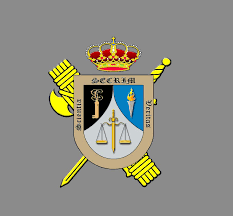

Spanish National News
FLOAT LIKE A BUTTERFLY, STING LIKE A BEE
As a child growing up in fenland Lincolnshire, I always seemed to be attacked by wasps, yet only once by a bumblebee, which had the misfortune to be squashed, as I was performing a dramatic handstand on our lawn. I also well remember one of my parents’…

As a child growing up in fenland Lincolnshire, I always seemed to be attacked by wasps, yet only once by a bumblebee, which had the misfortune to be squashed, as I was performing a dramatic handstand on our lawn. I also well remember one of my parents’ friends dying from the effects of a wasp sting, which to an impressionable child didn’t exactly endear me to any insect with a sting.
As I grew older, I began to develop a greater respect for bees, as opposed to wasps. I learned that bees very rarely attack unless provoked. However, my hatred of wasps continued to be fuelled as I grew older by the sight of my partner frantically trying to escape a swarm of angry wasps that had been disturbed by his enthusiastic attempts to trim our fast growing hedge with an electric hedge trimmer. Those wasps were certainly angry and expressed their displeasure upon my partner with a vengeance; I have never seen him move so quickly as he did that morning.
Since living in Spain’s Costa Blanca and the Canary Islands, I have never seen a wasp. I began to believe the myth that there are none of these evil insects on the Islands. However, I now understand that I am incorrect in this assumption and, to the contrary, wasps have been singled out as a major threat to native butterfly populations on the Canary Islands. Although reportedly only living in the Western Islands, due to higher humidity levels, wasps are now spreading to the whole archipelago.
As for the humble bee, I had not seen any in our garden until recently when, thanks to a huge and beautiful lavender plant that a friend gave us, is now home to many bees. Yes, I have learned to keep away from them, but also learned to be grateful to the honey bees on these Islands, and for the beautiful Canary Islands’ honey that they produce, as well as their generous contribution to the much loved honey rum, also produced on the island. Local honey certainly has a special and unique flavour, unlike any of the supermarket offerings that I have previously bought in the UK.
I have also learned that the Canary Islands bee is unique to these Islands. The UK bee is striped yellow and black, with a white tip on the abdomen, whereas bees living in the Canary Islands have no yellow bands, and they are just plain old black and white. For an island that is rich in colour, culture and diversity, this is something of an anomaly!
As for wasps, the Government in the Canary Islands is trying hard to control the damage that these insects cause to the beehives on the islands, and is working with beekeepers to locate and restrict the damage that they cause.
As a child, I often used to ask what was the point of wasps? Apart from being given the unconvincing answer of how important they were in clearing away rotting fruit, I remained cynical about their purpose in the greater scheme of things. However, I have recently discovered that a particular species of wasp living in the Canary Islands, commonly known as the Ensign wasp, is actually rather useful. This wasp, which looks a bit like a black spider is relatively harmless to humans, but is a parasite of cockroaches. The females of the species lay their eggs inside the egg cases of cockroaches and the wasp larvae eat the cockroach eggs.
I know that many readers of my ‘Twitters’ are not too keen on my cockroach stories, but this Twitter does have a happy ending. So, if you happen to see an Ensign wasp in the Canary Islands, just welcome it with open arms!
If you enjoyed this article, take a look at Barrie’s websites: www.barriemahoney.com and www.thecanaryislander.com or read his latest book, ‘Message in a Bottle’ (ISBN: 978 1480 031005). Available as paperback, Kindle and iBook
© Barrie Mahoney
Filed under: http://www.theleader.info/article/38538/
Car and Motor Insurance | Spanish Home Insurance | International Money Transfers | Send Money to Spain | Spain Property | Online International Payments | Property in Spain
Costa Blanca Property for Sale | Cabo Roig Property for Sale | International Payments |
-

 Court News2 weeks ago
Court News2 weeks ago66-year-old suspect sexual assault surfer on trial
-

 Driving in Spain2 weeks ago
Driving in Spain2 weeks agoHow to Check Your Driving Licence Points Online
-

 News1 week ago
News1 week agoYour Task for This Week is to Seek Out a Monument – The Week Ahead
-

 Crime and Policing2 weeks ago
Crime and Policing2 weeks agoThe Guardia Civil arrests three people for illegal street race

























